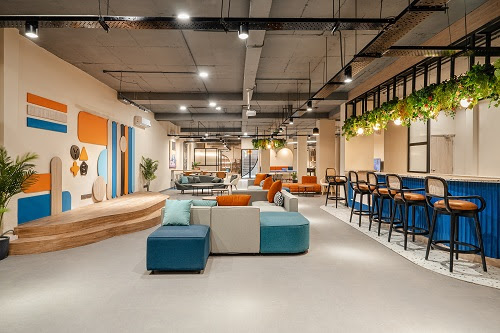Glass Sutra is India’s first comprehensive public access glass art studio. It is a one-of-a-kind creative space that strives to provide glass artists, enthusiasts of the glass art form, and exponents from other creative fields, the liberty to follow their passion and indulge in their artistic expression. Reshmi Dey, Founder Glass Sutra elaborates.
What led to establishing of Glass Sutra? Glass-making in India dates back several centuries but, did not advance beyond the very rudimentary stage. In spite of the tremendous potential, handmade glass in India is rare, simply because the opportunity to develop glassmaking as a craft continues to be nonexistent.
India has a large number of glass artisans concentrated in different pockets, mainly in Firozabad, Uttar Pradesh. These artisans are mostly from a rural background, and have not been exposed to any formal training in glass-making technology and techniques. Industry has been driven by only mass production giving little attention to quality and design. This has led to neglecting the importance of skill upgrade through formal training by industry and the market.
Due to lack of studio glass practice and also not having any institute to learn the techniques of glass making in the country, I felt very strongly that sharing knowledge and an open access to learning would bring about the much needed momentum to the industry. To make it a viable industry for the ever-increasing number of glass enthusiasts, it is imperative that I have my own studio, where I can demonstrate the tremendous qualities of the material to its maximum extent. I introduced the “Studio Glass” concept in India which is a skill based and design-oriented approach. The studio provides the space to allow myself and others to experience the relationship between glass and glassmaker, through hands on approach and demonstrations by our artist/artisan. It provides a platform through its tailor-made workshops to learn various aspects & techniques of glass making.
What is the current scenario of product design & promotion in India?
Design has evolved from being a vocation dealing with form and function to developing business models. Design has also evolved from being a mere function of styling or aesthetics to design as a strategic and innovation led process.
India formulated and adopted a National Design Policy and recently constituted an ‘India Design Council’ to implement the major provisions of National Design Policy. Product Design education has seen a significant growth in the last 5 years with the establishment of many private institutions. Lately, the Indian Design companies have been collaborating with foreign design companies. Even though the number is currently minuscule but the trend is visible. Many foreign design companies are setting up their own offices in India. To understand the Indian consumer better, Indian businesses and multinational corporations will need to take assistance from Indian designers. This puts a spotlight on the product design industry as never before. Also read http://realtyplusmag.com/ekam-the-largest-column-less-meditation-chamber-in-asia/
Brief on the recently launched Ashtori collection that celebrates the textile heritage of Northeastern India.
‘Ashtori’, an amalgamation of Asht (eight) and Dori(thread), represents the eight siblings states of NorthEast which are politically and geographically separated yet connected through the culture and traditional weaving. The first range “North-East in the Light” is inspired by the first ray of sunlight received by North-Eastern states, yet negligence of infrastructure brings the darkness to this beautiful diverse land. This contrast is shown through two colours Black & White. The collection is engraved with signature motifs of the North-Eastern states.
I have realized that in a cluttered market like India, exclusive work is not enough. One must also invest in one’s own exclusive branding, marketing and invest in promoting one’s work, because replicas of international & national designers/companies are a common affair.
The second range “North-East by the Thread” showcases the beauty of the region and how the entire region is connected by a single thread showing the strength of togetherness. Interesting weaving patterns are fashioned with two different yarns/threads: yarns of Eri, popularly known in India as Ahimsa Silk (Peace Silk), which involves a non-violent and sustainable process to collect silk cocoons and procure silk. Another one is Ghisa Silk, which has been made out of Muga and Eri waste and is woven onto the glass representing the vibrancy of the region



















